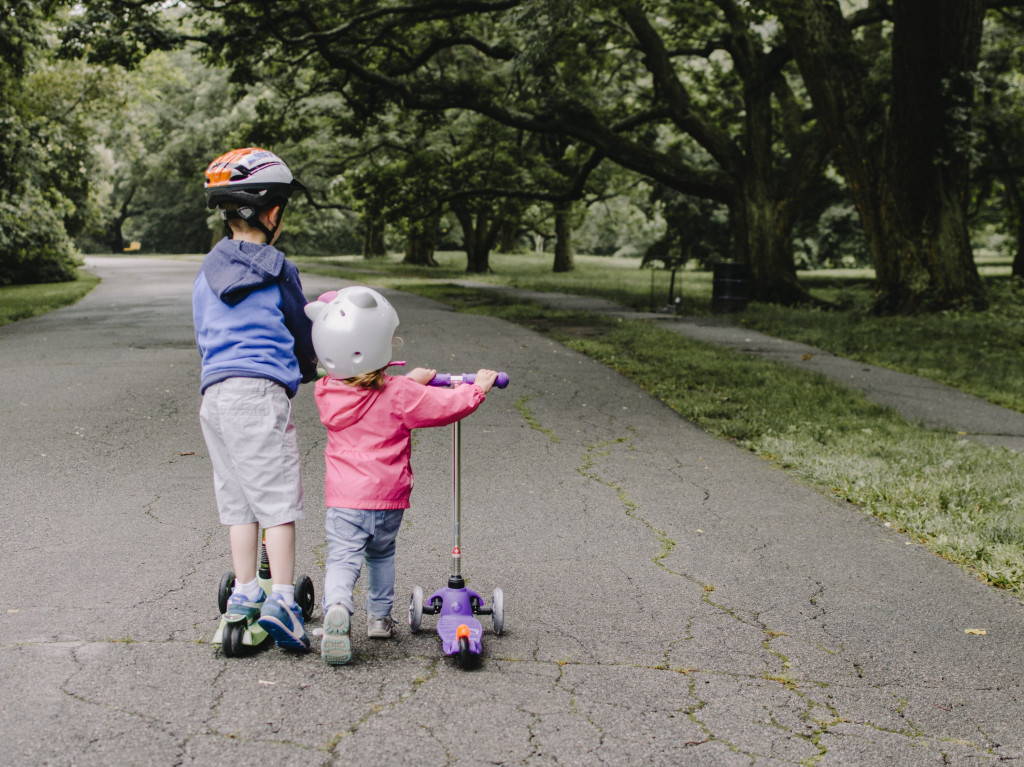
Kids growing bodies need to play sports safely. This can be done by knowing what is required for each sport.
- Soccer – Specific soccer cleats and shin guards
- Volleyball – volleyball shoes, knee pads
- Baseball – bat, catching/or batting helmet, fielding glove, catcher’s mask (if needed), chest protector (if needed), baseball cleats, athletic support
- Football- helmet, mouthguard, shoulder pads, cleats, neck collar, athletic support, gloves, thigh pads, hip pads, and knee pads.
- Gymnastics
- Dance – proper shoes for the type of dance
- Golf – appropriate clubs
Helmets are important
- Different helmets for different activities, and each type of helmet is designed to protect your head from the impact common to a particular activity or sport. You should always wear a helmet that is appropriate for the activity you participate in because other types of helmets may not protect you.
- Helmets feel comfortable but snug. Helmets should sit evenly on your head (not be tilted back on the top of the head or pulled too low over your forehead). The helmet should not move in any direction, back to front or side to side. The helmet should have a secure buckle to keep it from moving or falling off on either a first or second impact. If you are riding your bike and collide with something (first impact), the helmet will still be firmly in place if you then fall onto the pavement (second impact). The helmet must be easy to adjust and fit properly without a lot of adjustments. Once helmet adjustments have been made, they should stay put.
- Evaluate your children’s sizing by having them try on a variety of helmets. When fastened and tightened, the helmet should not move from side to side or front to back, and your child’s forehead should be properly covered to keep it protected.
- Some helmets are manufactured to withstand one impact, while others are made to withstand multiple impacts. Bicycle helmets are designed to protect against a single severe impact, such as a fall onto the pavement. The foam material in the helmet will crush to absorb the impact energy during a fall and cannot protect you again from a subsequent impact. So even if there are no visible signs of damage, you must replace it.
- Other helmets are designed to protect against multiple moderate impacts, including football and hockey helmets. However, you may still have to replace these helmets after one severe impact, particularly if the helmet has visible signs of damage, such as a cracked shell or a permanent dent.
- Helmets for children or toddlers should also have a buckle that holds firm in a crash but releases after five seconds of steady pull to avoid potential strangulation. A child’s helmet will usually fit for several years, and most models have removable fitting pads that can be replaced with thinner ones as the child’s head grows.
Signs and Symptoms of Concussion or TBI (traumatic brain injury)
It is important to know what to look for regarding concussions.
- Headache
- Blurred or double vision
- Dizziness, balance problems, or trouble walking
- Confusion and saying things that do not make sense
- Being slow to answer questions
- Slurred speech
- Nausea or vomiting
- Not remembering what happened
- Not feeling well
Symptoms of a concussion usually happen right away but can show up hours or days after an injury. A teen with a concussion may exhibit the following symptoms:
- Trouble focusing
- Have learning or memory problems
- Sleep problems
- Feel sad, easily upset, or angered, or nervous
If your child has been diagnosed with a concussion, call your health care provider, or go to the ER if your child has one of the following:
- Worsening headache
- Seizure
- Passes Out
- Continued vomiting or any other system that worries you.
If injured or complaining of pain, take them to a chiropractor.
